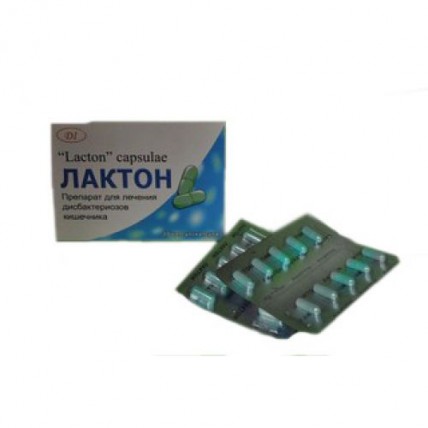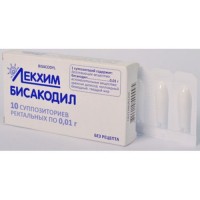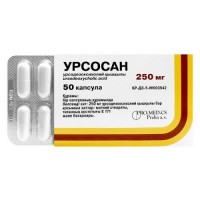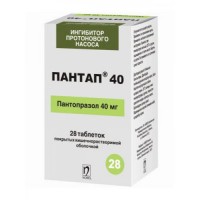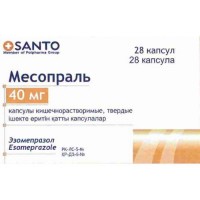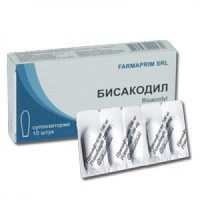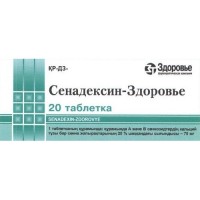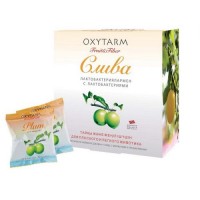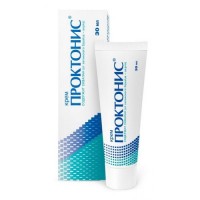The instruction for medical use of LACTONE medicine the Trade name the Lactone the International unlicensed name Is not present the Dosage form of the Structure One Capsule Capsule contains active agents: spores of lactobacilli not less than 180 x 106 folic acid of 0.15 mg cyanocobalamine of 0.015 mg, excipients: starch, magnesium stearate, lactose, structure of the capsule: gelatin, titanium dioxide. Description Solid gelatin capsules of white or almost white color. Capsule contents – powder of white or almost white color. Pharmacotherapeutic group the Drugs containing the microorganisms producing lactic acid in a combination with other drugs. The ATX A07FA51 code Pharmacological action Pharmacokinetics At intake, spores of lactobacilli are activated at low values of acidity in a stomach, then get into a duodenum where burgeon and will be transformed to vegetative cells. In a small intestine of a lactobacillus produce dextrorotatory lactic acid which interferes with growth of pathogenic microorganisms. Lactobacilli are slowly excreted from an organism (in 10-12 days) after the reception termination. Folic acid. After intake, folic acid connects in a stomach to an internal factor of Castle. The maximum concentration in blood is reached in 30-60 min. Almost completely contacts proteins of blood plasma. It is activated in a liver by enzyme of a degidrofolatreduktaz, passing into tetrahydrofolic acid. From blood within 3 min. 90-95% goes to fabrics. It is distributed in all fabrics, but 2/3 from all quantity in an organism find in a liver, an essential part collects in liquor. Elimination happens mainly kidneys in an invariable look, in 3 hours 2% of the entered dose, and in the next hours – 0.5% an hour are removed. After introduction of a high dose folic acid it is long circulates in blood, slowly gets to fabrics, and with urine it is removed in 2 hours of 20-30%, and in the next hours – 5-10% of the entered dose. Cyanocobalamine. Absorption of cyanocobalamine happens on all length thin and partly a large intestine. Process happens passively, but at a lack of vitamin the active process, mainly in an ileal gut joins. Vitamin connects to an internal factor of Castle, forming a complex which intestinal microflora cannot use. The complex joins the surface of a small intestine, gives vitamin which is transported further in a cell. The activity of this process depends on normal structure of a mucous membrane of intestines which is supported by folic acid and also from existence in a gleam intestines of free calcium ions and alkali reaction of the environment. In blood B12 vitamin is connected with transcobalamines I and II which transport it in fabric. Deposition of cyanocobalamine happens mainly in a liver, but also in other cells, in particular in leukocytes. In a liver disease the deposition of B12 vitamin decreases, its losses increase. It is removed from a liver with bile in intestines (3-7 mkg daily) from which it is again soaked up. In intestines diseases, especially at insufficiency of folic acid, this process of circulation of vitamin is broken that leads to its loss from an organism. In this case hypovitaminosis comes rather, than at a lack of vitamin B to food. Elimination of B12 happens mainly kidneys. The intensity depends on the entered drug dose. At introduction of high doses (100-1000 mkg) with urine in 48 hours 50-98% of the entered dose are removed. A pharmacodynamics of the Lactobacillus are saprophytes probiotics. They are a component of normal intestinal microflora and possess antagonistic action in relation to pathogenic (E.coli. Salmonella, Shigella, Proteus, Staphylococci, Clostridia), etc., to uslovnopatogenny microorganisms and mushrooms due to producing lactic acid and by that create favorable conditions for development of normal intestinal microflora. Lactobacilli play an important role in intestinal digestion, synthesis of B3, B5, B6, B12 vitamins, folic acid, biotin, vitamin K, bactericides and digestive enzymes of type of amylase, protease and a lipase. Lactobacilli in the form of spores, are very resistant to influence of external adverse factors: antibiotics and digestive acids. Spore-forming lactobacilli play an important role in cholesterol metabolism. They promote transformation of cholesterol to badly soaked up form (koprostanol) that interferes with its absorption in intestines. Cyanocobalamine (B12 vitamin) participates in carbohydrate, proteinaceous and lipidic exchanges. Normalizes blood formation, angenesis, functions of a liver and the central nervous system. In an organism cyanocobalamine (mainly in a liver) turns into a cofactor – Cobamamidum which is a part of the numerous restoring enzymes. Especially its entry into composition of the reductase restoring folic acid in tetrahydrofolic is important. It B12 vitamin activates processes of a hemopoiesis, angenesis. Besides, Cobamamidum is necessary for formation of a desoksiriboza and synthesis of DNA and also for completion of maturing of erythrocytes. Cobamamidum is a part of the restoring enzymes maintaining activity of sulfhydryl groups in various proteins and enzymes. Maintaining activity of erythrocytes, their protection from hemolysis is explained by it. Pernicious anemia develops in connection with an imbalance of subpopulations of lymphocytes. Prescribing of B12 vitamin, restores the normal level of lymphocytes suppressors and eliminates with it the called anemia form. Cobamamidum is necessary for transformation of methyl-malonic acid into amber, being a part of a myelin, for utilization of propionic acid. At insufficiency of cyanocobalamine in an organism with urine the increased amounts of methyl-malonic and propionic acids are removed. Cobamamidum is necessary for formation of methionine – the donator of the methyl groups used for sincaline synthesis – a lipotropic factor. Cobamamidum participates in transmethylation process. Folic acid is well soaked up in the digestive tract (DT). Folic acid in a liver is restored to tetrahydrofolic acid which after joining of formylation group turns into foliniyevy acid. Foliniyevy acid is a cofactor of a number of the enzymes participating in transport of the one-carbon remains of methyl group, formyl, oxymethyl, a methylene), the purine and pirimidinovy bases used in the course of synthesis – the main components of nucleic acids (RNA and DNA). It leads to activation of processes of cell fission. The one-carbon remains transferred by foliniyevy acid go for synthesis of some amino acids that activates protein synthesis. Foliniyevy acid promotes connection of proteinaceous and prosthetic groups of haemo proteins, in particular hemoglobin. It brakes a xanthineoxidase and it promotes preservation of purine bases and their reuse in an organism. Foliniyevy acid activates utilization of glutaminic acid in the course of intracellular protein synthesis. As a result, foliniyevy acid stimulates eritro-, leucio- and a thrombocytopoiesis, plastic and regenerator processes in all bodies and fabrics. Indications - disturbances of physiological flora of intestines in time and after treatment by antibiotics, streptocides, radiation therapy - diarrhea of travelers - a syndrome of insufficiency of digestion, a fermentopatiya, dyspepsia - diarrhea, a meteorism, constipations, - acute and chronic coloenterites of various etiology (bacterial and virus) as a part of complex therapy only by the adult appoint the Route of administration and doses For intake in 1 hour prior to food on 1 capsules once a day. Course of treatment of 7-10 days. In the diseases proceeding with a recurrence repeated courses of treatment are reasonable. In view of an antibiotikoustoychivost of spore-forming lactobacilli the use of a lactone does not interfere with antibiotic treatment. A lactone it is possible to appoint therapy after a course of treatment bacteriophages. Side effects - allergic reactions, skin rash, a skin itching, a bronchospasm, an erythema - a hyperthermia - the dispeptic phenomena, an abdominal pain - insomnia, increase in convulsive readiness - hyperphrenia, a headache, dizziness - a cardialgia, tachycardia - hypercoagulation, disturbance of purine exchange at use of high doses of the Contraindication - hypersensitivity to drug components - thrombosis, an erythremia, a hyperglobulia - children's and teenage age up to 18 years - intolerance of dairy products. - B12-scarce vitamin anemia - pernicious anemia - malignant new growths - deficiency of cobalamine - pregnancy and the period of a lactation Medicinal interactions the Concomitant use with antacids (drugs of calcium, aluminum and magnesium), Colestyraminum, alcohol, valproic acid, sulfonamides and cytostatics reduces therapeutic effect of a lactone. Anticonvulsant drugs (Phenytoinum and carbamazepine), nonsteroid analgetics, estrogen, oral contraceptives increase the need for folic acid. Folic acid reduces efficiency of Phenytoinum. The methotrexate, Pyrimethaminum, triamtern, Trimethoprimum inhibit a digidrofolatreduktaza and reduces effect of folic acid (the patients using these drugs should appoint calcium folinat). Aminoglycosides, salicylates, antiepileptic drugs, colchicine, drugs of potassium reduce B12 vitamin absorption. Chloramphenicol reduces hemopoietic effect the answer of B12 vitamin. It is impossible to combine with the drugs increasing blood clotting. Need to observe the special instructions Precaution at reception oncological patients, the patient with fibrinferments and a Gee's disease. At use of high doses there can be a resistance. The drugs containing folic acid do not apply to treatment of B12-scarce anemia (pernicious), normatsitarny and aplastic anemia. Features of influence of medicine on ability to run the vehicle or potentially dangerous mechanisms. Considering side effects of drug, it is necessary to be careful when driving or potentially dangerous mechanisms, the demanding concentration of attention. Overdose Symptoms: strengthening of side effects of drug, allergic reactions, nausea, vomiting, a stomach ache, episodes of the increased convulsive activity are possible. Treatment: drug withdrawal, gastric lavage with activated carbon, purpose of the enveloping means, the supporting and symptomatic therapy. In case of development of spasms, diazepam intramusculary or intravenously 5-10 mg is appointed. There is no specific antidote. The form of release and packing On 10 capsules place in blister strip packaging from a film of polyvinylchloride and aluminum foil. On 1, 2 or 3 planimetric packs together with the instruction for medical use in the state and Russian languages place in a pack from cardboard. To Store storage conditions in the dry place protected from light at a temperature not above 25 °C. To store out of children's reach! A period of storage 3 years After an expiration date not to apply Prescription status Without prescription Kwality Pharmaceuticals PVT Ltd. Producer, India the Owner of the registration certificate of Denovo Impex LLP, the Republic of Kazakhstan the Address of the organization accepting in the territory of the Republic of Kazakhstan claims from consumers on quality of products (goods): Republic of Kazakhstan, Almaty, Utegen St. of the batyr, 13 Ph.: (727) 2437415 E-mail:
To Develop denovo.kz@rambler.ru
To Develop denovo.kz@rambler.ru
